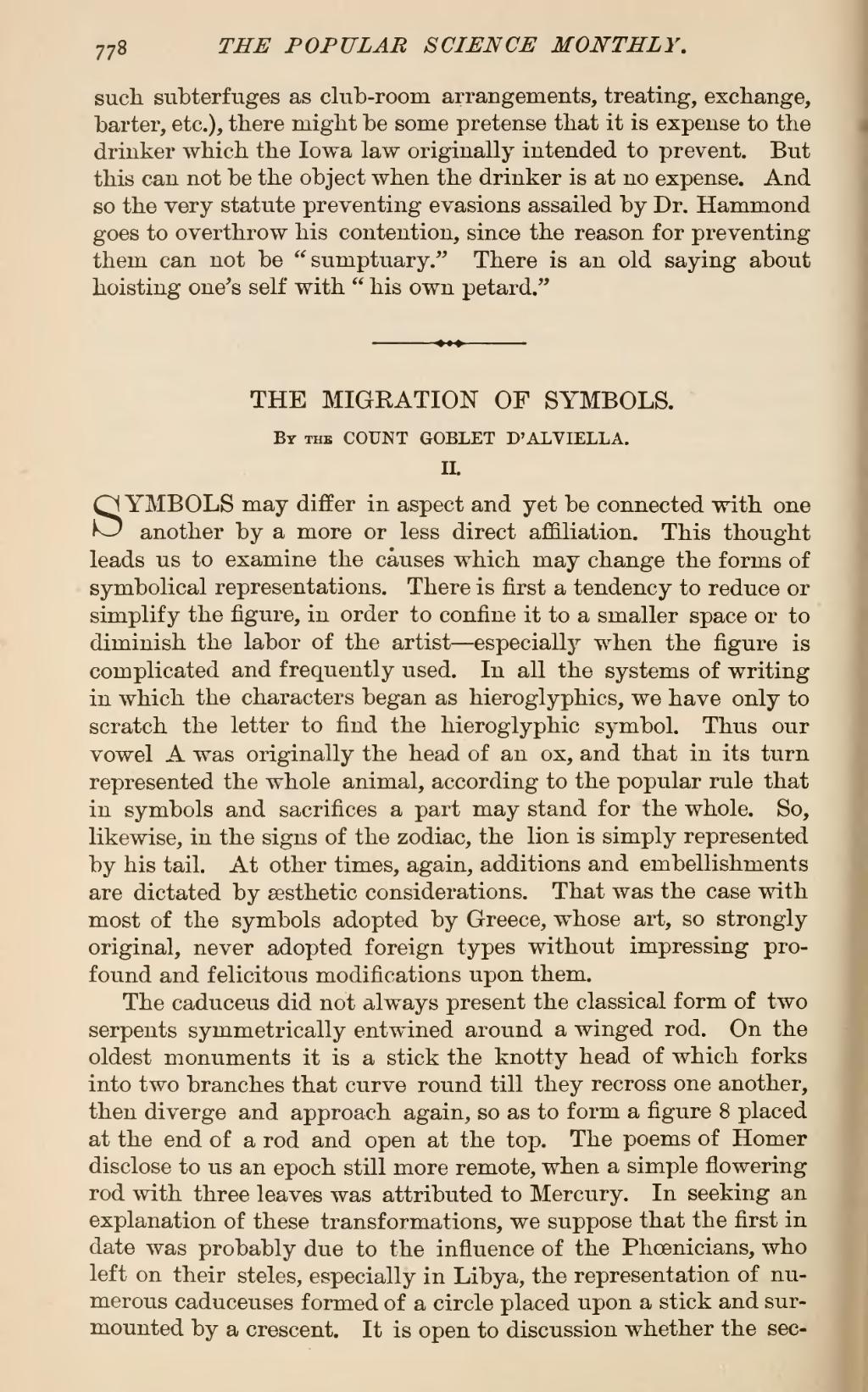such subterfuges as club-room arrangements, treating, exchange, barter, etc.), there might be some pretense that it is expense to the drinker which the Iowa law originally intended to prevent. But this can not be the object when the drinker is at no expense. And so the very statute preventing evasions assailed by Dr. Hammond goes to overthrow his contention, since the reason for preventing them can not be "sumptuary." There is an old saying about hoisting one's self with "his own petard."
| THE MIGRATION OF SYMBOLS. |
By the COUNT GOBLET D'ALVIELLA.
II.
SYMBOLS may differ in aspect and yet be connected with one another by a more or less direct affiliation. This thought leads us to examine the causes which may change the forms of symbolical representations. There is first a tendency to reduce or simplify the figure, in order to confine it to a smaller space or to diminish the labor of the artist—especially when the figure is complicated and frequently used. In all the systems of writing in which the characters began as hieroglyphics, we have only to scratch the letter to find the hieroglyphic symbol. Thus our vowel A was originally the head of an ox, and that in its turn represented the whole animal, according to the popular rule that in symbols and sacrifices a part may stand for the whole. So, likewise, in the signs of the zodiac, the lion is simply represented by his tail. At other times, again, additions and embellishments are dictated by aesthetic considerations. That was the case with most of the symbols adopted by Greece, whose art, so strongly original, never adopted foreign types without impressing profound and felicitous modifications upon them.
The caduceus did not always present the classical form of two serpents symmetrically entwined around a winged rod. On the oldest monuments it is a stick the knotty head of which forks into two branches that curve round till they recross one another, then diverge and approach again, so as to form a figure 8 placed at the end of a rod and open at the top. The poems of Homer disclose to us an epoch still more remote, when a simple flowering rod with three leaves was attributed to Mercury. In seeking an explanation of these transformations, we suppose that the first in date was probably due to the influence of the Phoenicians, who left on their steles, especially in Libya, the representation of numerous caduceuses formed of a circle placed upon a stick and surmounted by a crescent. It is open to discussion whether the sec-

